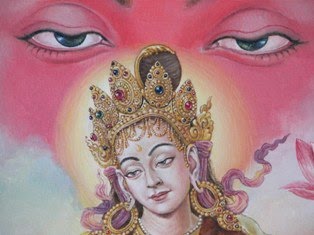Shiva:
Shiva is a Hindu God. He is the destroyer and regenerator. He is believed to have three forms. Natraj the God of Dancing skill, and anthromorphic form and the lingam form. In front of any Shiva temple, one usually sees a statue of Nandi, the divine bull that serve as Shiva’s vehicle. In anthropomorphic form, Shiva is depicted with his consort parbiti and usually holds a trident and a small drum. Another popular form of Shiva is the terrifying.
- Third eye: Shiva is often depicted with a third eye, with which he burned Desire (Kama) to ashes, called "Tryambakam" (Sanskrit: त्र्यम्बकम्), which occurs in many scriptural sources. In classical Sanskrit, the word ambaka denotes "an eye, Shiva is depicted as three-eyed, so this name is sometimes translated as "having three eyes
- Crescent moon: Shiva bears on his head the crescent moon. The epithet Chandraśekhara (Sanskrit: चन्द्रशेखर "Having the moon as his crest" - Chandra = "moon", Sekhara = "crest, crown") refers to this feature. The placement of the moon on his head as a standard iconographic feature dates to the period when Rudra rose to prominence and became the major deity Rudra-Shiva. The origin of this linkage may be due to the identification of the moon with Soma. The crescent moon is shown on the side of the Lord Shiva's head as an ornament. The waxing and waning phenomenon of the moon symbolizes the time cycle through which creation evolves from the beginning to the end. Since the Lord is the Eternal Reality, He is beyond time. Thus, the crescent moon is only one of His ornaments. The wearing of the crescent moon in His head indicates that He has controlled the mind perfectly.
- Ashes: Shiva smears his body with ashes (bhasma).
- Matted hair: Shiva's distinctive hair style is noted in the epithets Jaṭin, "the one with matted hair", and Kapardin, "endowed with matted hair” or “ wearing his hair wound in a braid in a shell-like (kaparda) fashion".
- Blue throat: The epithet Nīlakaṇtha (Sanskrit नीलकण्ठ; nīla = "blue", kaṇtha = "throat")refers to a story in which Shiva drank the Poison churned up from the world ocean.
- Sacred Ganges: The Ganges River flows from the matted hair of Shiva. The epithet Gangadhara ("bearer of the river Ganga”) refers to this feature. The flow of the Ganges also represents the nectar of immortality.
- Tiger skin: He is often shown seated upon a tiger skin. Tiger represents lust. His sitting on the tiger’s skin indicates that He has conquered lust.
- Serpents: Shiva is often shown garlanded with a Snake. His wearing of serpents on the neck denotes wisdom and eternity.
- Trident: (Sanskrit: Trishula): Shiva's particular weapon is the Trident. His Trisul that is held in His right hand represents the three Gunas-Sattva, Rajas and Tamas. That is the emblem of sovereignty. He rules the world through these three Gunas. The Damaru in His left hand represents the Sabda Brahman. It represents OM from which all languages are formed. It is He who formed the Sanskrit language out of the Damaru sound.
- Drum: A small drum shaped like an hourglass is known as a damaru (Sanskrit: ḍamaru). This is one of the attributes of Shiva in his famous dancing representation, known as Nataraja. A specific hand gesture (mudra) called ḍamaru-hasta (Sanskrit for "ḍamaru-hand") is used to hold the drum. This drum is particularly used as an emblem by members of the Kāpālika sect.




